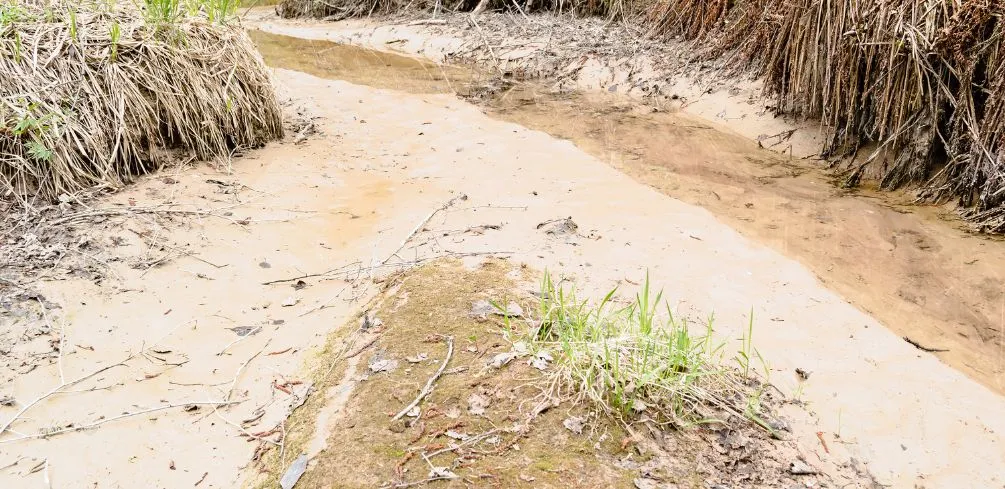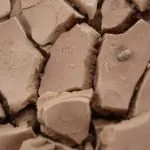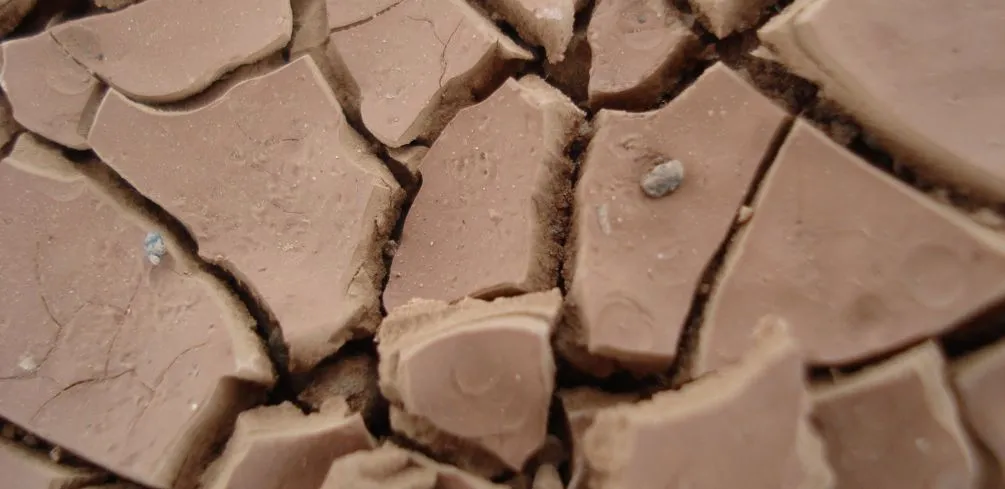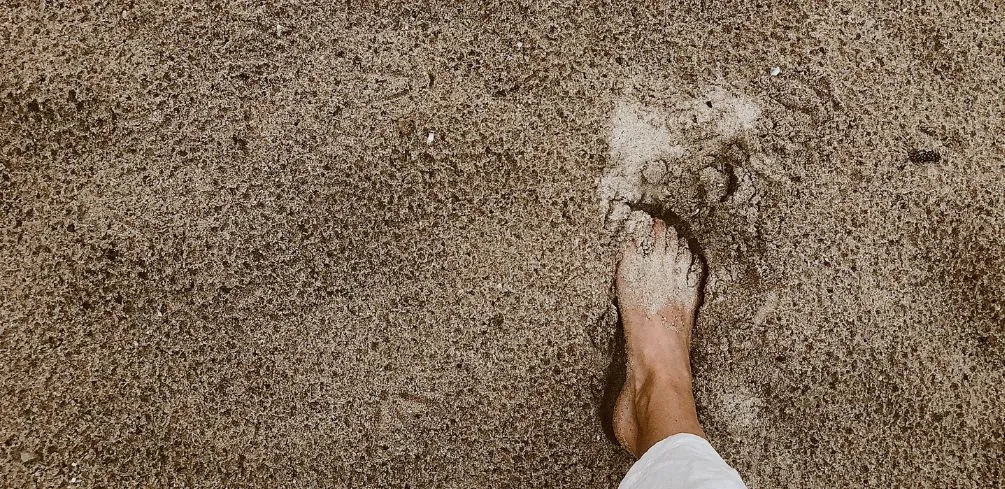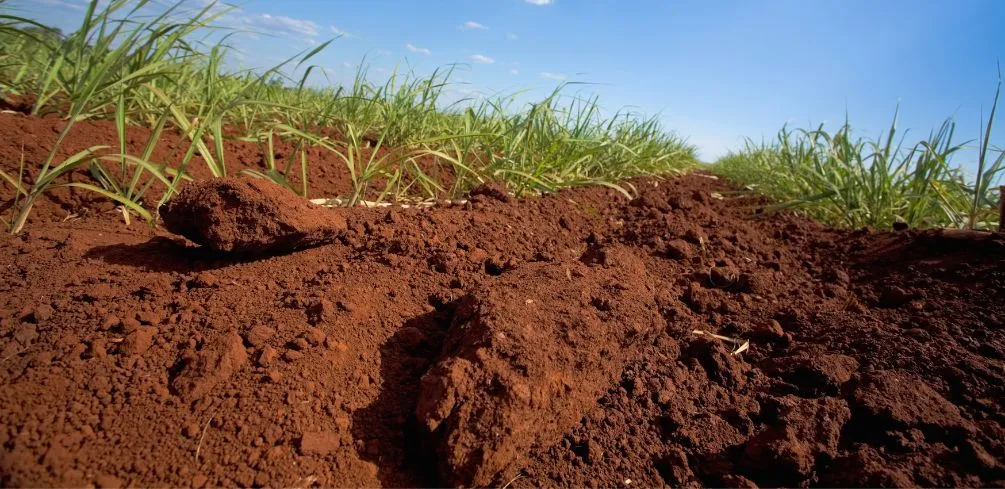Silt is an essential component of any ecosystem, yet it remains largely unnoticed and unappreciated. This fine-grained sediment plays a crucial role in the health and vitality of rivers, lakes, and coastal areas. Understanding the properties of silt is key to understanding its impact on these environments.
Silt consists of particles between 0.002mm and 0.06mm in size, making it larger than clay but smaller than sand. It is formed by the erosion of rocks and minerals by water or wind and can be found in various forms such as mud, sediment, or soil.
Silt has unique physical characteristics that affect its behavior in different environments. Its small size allows it to be easily transported by water or wind currents, making it a significant contributor to erosion and sedimentation processes. At the same time, silt’s large surface area provides an ideal environment for microorganisms to thrive, making it a vital component of aquatic food chains.
In this article, we will explore the properties of silt in more detail and examine its importance in maintaining healthy ecosystems.
The Physical Characteristics Of Silt
The physical characteristics of silt are essential factors that affect soil properties and its performance in various applications.
Silt is a sedimentary material consisting of particles with a diameter between 0.002 to 0.05 mm, making it finer than sand but coarser than clay. The particle size of silt is an important aspect since it can affect the soil’s porosity, hydraulic conductivity, and water retention capacity.
Silt particles are primarily composed of quartz, feldspar, mica, and other minerals found in rocks that have been weathered by wind or water erosion. The mineral composition of silt varies depending on the source rock and geological history.
The presence of these minerals affects the mechanical properties of silt such as its compressibility, shear strength, and deformation behavior under different loading conditions. Understanding the physical characteristics of silt is crucial for assessing its suitability for various engineering applications such as foundation design, slope stability analysis, and soil improvement techniques like stabilization and reinforcement.
The Formation And Sources Of Silt
As humans, we tend to take things for granted. For example, we might not give much thought to the formation and sources of silt – a common sediment that can be found in rivers and lakes. However, by examining the geological formations that produce silt and understanding the properties of this sediment, we can gain a deeper appreciation for its role in our world.
Silt particle size is an important factor when it comes to an understanding how this sediment is formed. Silt particles are larger than clay particles but smaller than sand particles, typically measuring between 0.002 and 0.063 millimeters in diameter.
One way that silt is produced is through weathering processes such as erosion, where wind or water breaks down rocks and minerals into smaller particles. Additionally, geological formations such as glaciers or rivers can also produce silt over time through the movement of large volumes of sediment.
By examining these processes, we can better understand the sources and formation of silt in our environment.
Here are some additional ways that geological formations contribute to the production of silt:
- Volcanic activity: Eruptions can release ash that breaks down into fine particles over time.
- Tectonic forces: Movement along fault lines can cause the rock to break down into smaller pieces.
- Depositional environments: Certain environments, such as deltas or floodplains, are more likely to produce silt due to their high levels of sediment accumulation.
- Human activities: Activities like mining or construction can disturb soil and create silt through erosion.
By exploring these sources and factors contributing to the formation of silt, we begin to see how this seemingly mundane sediment plays an important role in shaping our landscape and environment.
The Role Of Silt In Erosion And Sedimentation Processes
Silt plays a significant role in erosion and sedimentation processes. It is a fine-grained soil particle that can be easily transported by wind and water.
Silt deposits can form at the bottom of riverbeds or settle on the land after a flood. These deposits can have an impact on the surrounding environment, as they can change the flow of water and affect drainage patterns.
Moreover, silt also has important uses in agriculture as a soil conditioner. When added to soil, it can improve its structure and increase its ability to retain moisture. This makes it an ideal component for improving soil fertility and crop yields.
In geological formations, silt is commonly found in sedimentary rocks such as shale and sandstone. The presence of silt in these rocks indicates past conditions such as slow-moving water or calm oceanic environments.
Understanding the role of silt in erosion and sedimentation processes is crucial for managing natural resources effectively and sustainably.
As we have seen, silt is a crucial element in erosion and sedimentation processes, with significant impacts on both natural landscapes and agricultural productivity. As a soil conditioner, it plays an important role in improving the quality of farmland through its ability to retain moisture and improve soil structure.
Additionally, its presence in geological formations provides valuable insight into past environmental conditions. Therefore, further research into the properties of silt could lead to important advances in agriculture, geology, and environmental science more broadly speaking.
The Importance Of Silt In Aquatic Food Chains
The aquatic world is like a bustling city with its own ecosystem of inhabitants, each playing an important role in the food chain.
Silt can be compared to the foundation of a building, often overlooked but essential for stability and growth. The particle size of silt is small enough to remain suspended in water and carried downstream by currents.
As it travels, it collects nutrients and organic matter, becoming a rich source of food for many aquatic organisms.
Silt is not just a passive player in the aquatic world; it actively contributes to the food chain. Aquatic plants absorb nutrients from silt, providing nourishment for herbivores such as snails and fish. As these herbivores are consumed by predators higher up in the food chain, silt indirectly supports their survival too.
Therefore, silt plays a vital role in maintaining the balance of the aquatic ecosystem and ensuring that all organisms have access to a nutrient-rich diet.
The Impact Of Human Activities On Silt And Its Properties
Human activities have had a significant impact on the properties of silt. One of the most common impacts is erosion caused by deforestation, agriculture, and construction activities.
As soil erosion occurs, it leads to a buildup of silt in streams, rivers, and lakes. The increased sedimentation can cause severe flooding and damage to infrastructure such as dams and bridges.
Another impact of human activities on silt is pollution caused by improper waste disposal practices, chemical spills, and industrial runoff.
These pollutants can alter the chemical composition of silt, making it unsuitable for plant growth or other uses. Additionally, contaminated silt can pose health risks to humans and wildlife if not properly managed.
To prevent further degradation of silt properties, various measures can be implemented such as soil conservation practices like terracing or vegetation cover to reduce erosion.
Proper waste management practices must also be enforced to prevent pollution of water sources that contribute to sedimentation.
Regular monitoring of water quality is also necessary to ensure that any potential threats are detected early enough before they cause severe damage to the ecosystem.
By taking these measures seriously, we can protect the properties of silt from irreversible damage while ensuring sustainable use for future generations.
Frequently Asked Questions
What Is The Chemical Composition Of Silt?
The chemical composition of silt varies depending on its formation processes. Generally, it consists of mineral particles that range from 0.002 to 0.05 millimeters in size, which are predominantly composed of quartz, feldspar, and clay minerals.
The industrial applications of silt are vast as it can be used as a raw material for the production of bricks, ceramics, and construction materials.
Additionally, it is also utilized in the manufacturing of semiconductors and glassware due to its unique physical properties. Understanding the chemical composition of silt is crucial for various scientific fields such as geology, environmental science, and engineering.
Can Silt Be Found In Areas Outside Of Riverbeds?
Silt deposition and erosion are natural processes that can occur in various environments, not just limited to riverbeds.
For instance, silt can accumulate in lakes, estuaries, and even coastal areas with high wave energy. The presence of silt in these areas can have significant impacts on the ecology and physical properties of the sediment.
Research has shown that silt accumulation can alter water flow dynamics, reduce light penetration into the water column, and affect the growth of aquatic vegetation. Additionally, silt erosion can lead to increased turbidity levels, which may negatively impact fish populations and other aquatic organisms.
Therefore, it is important to understand the distribution and behavior of silt particles outside of river channels for the effective management of these ecosystems.
How Does Silt Affect The Ph Levels Of Water?
Water quality is a crucial factor in sustaining aquatic ecosystems and human health.
Sedimentation patterns, especially those caused by silt, can have a significant impact on water quality.
Silt particles are fine-grained sediments that can settle at the bottom of water bodies, affecting pH levels and nutrient availability.
In some cases, high levels of silt can lead to decreased oxygen levels in the water, which can be harmful to fish and other aquatic organisms.
To put it into perspective, silt in water is like dust on a bookshelf – just as dust accumulation can make it difficult to access books, silt accumulation in water can hinder its usability and affect its overall quality.
Therefore, understanding how silt affects pH levels is crucial for maintaining healthy water systems.
Can Silt Be Harmful To Aquatic Life?
The impact of silt on fisheries has been a topic of concern for many years. Siltation, which is the accumulation of fine sediment particles in water bodies, can negatively affect water quality and harm aquatic life.
Silt can reduce the amount of light that penetrates the water, which may limit photosynthesis and decrease oxygen levels. Additionally, silt can clog the gills of fish or other organisms, making it difficult for them to breathe.
The presence of silt in water can also alter the pH levels and nutrient content, which affects the growth and reproduction of aquatic life.
Therefore, it is important to manage siltation in order to maintain healthy aquatic ecosystems and preserve fisheries.
How Does Silt Differ From Clay And Sand?
Silt, clay, and sand are all common sediment types found in aquatic environments. While they may appear similar at first glance, each type has distinct properties that set them apart.
Silt particles are larger than clay but smaller than sand, with a diameter between 0.002 and 0.05 millimeters. This means that silt particles are small enough to be carried by water currents but large enough to settle relatively quickly.
In contrast, clay particles are much smaller than silt (less than 0.002 millimeters), which allows them to remain suspended in water for long periods of time.
Sand particles, on the other hand, are much larger than both silt and clay (between 0.05 and 2 millimeters), making them too heavy to remain suspended in water for very long.
Understanding these differences is important for scientists studying sediment transport and deposition in aquatic environments as well as for engineers designing structures such as dams or bridges that need to withstand the forces of flowing water carrying different sediment types.
Conclusion
Silt is a type of sediment that is composed of fine particles, typically with a diameter between 0.002 mm and 0.06 mm. It is often found in riverbeds and other bodies of water, but can also be present in soil and other types of sedimentary deposits.
The chemical composition of silt varies depending on its source, but it generally contains a mixture of minerals such as quartz, feldspar, and mica.
Silt can have significant effects on the pH levels of water, as it can absorb and release various ions depending on the conditions. This can lead to fluctuations in pH that may be harmful to aquatic life, particularly if the silt is disturbed or suspended in the water column.
However, silt can also provide important habitats for many species of fish and other aquatic organisms, as well as serving as an important source of nutrients for plants and animals.
One example of the importance of silt comes from the Nile River in Egypt. The annual flooding of the Nile brought fertile silt to the riverbanks each year, allowing ancient Egyptian civilization to thrive by providing ample agricultural land for crops such as wheat and barley.
Today, however, changes to the river’s flow regime due to human activity have led to reduced sediment deposition along the banks, causing soil erosion and degradation that threatens food security for millions of people who depend on agriculture in this region.
The study of silt properties is therefore crucial not only for understanding natural systems but also for managing them sustainably in order to support both human societies and fragile ecosystems alike.
